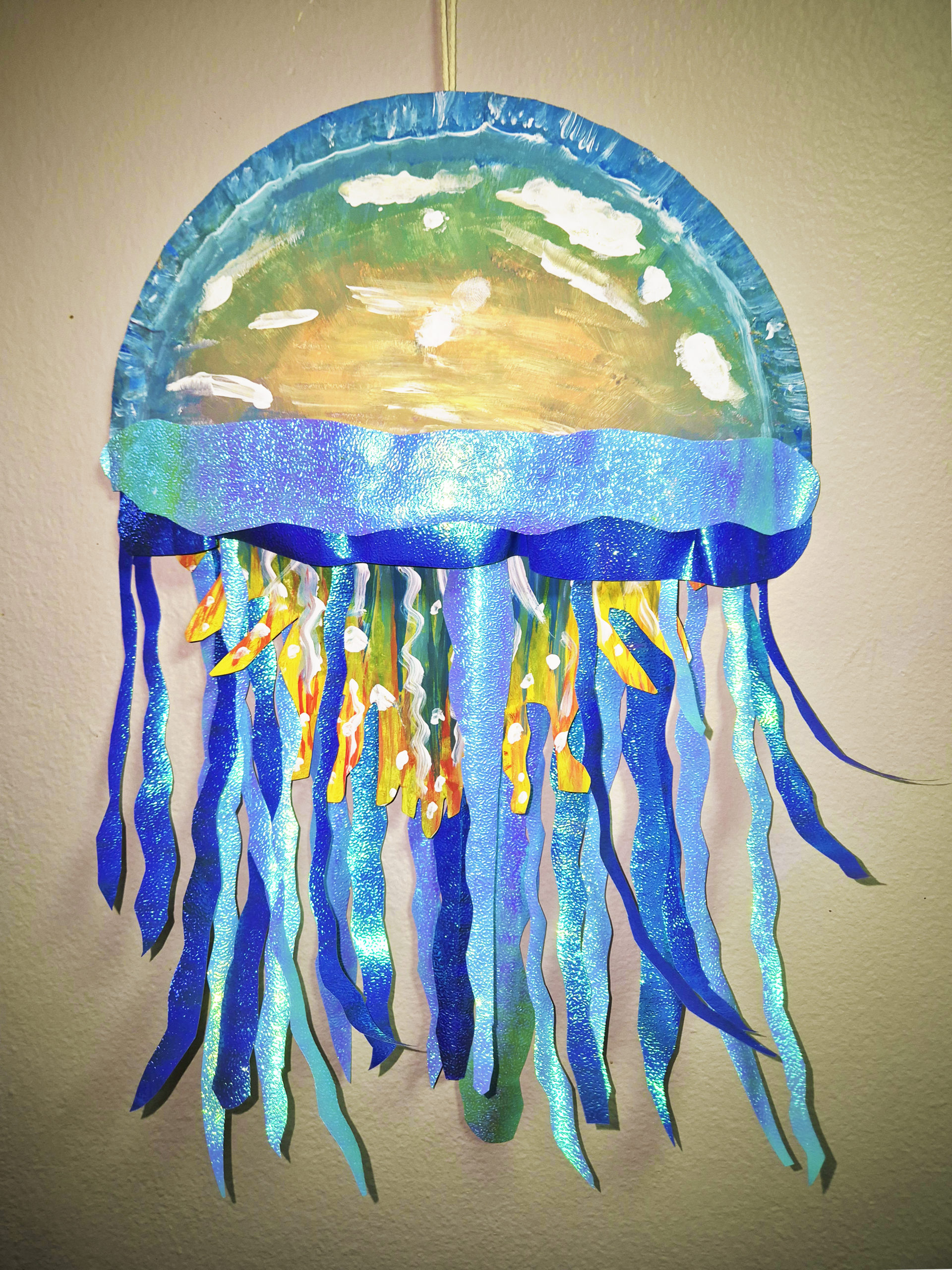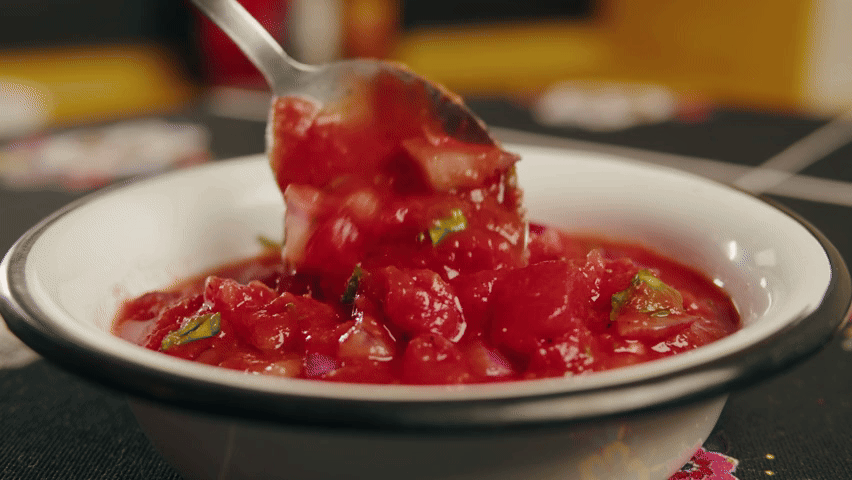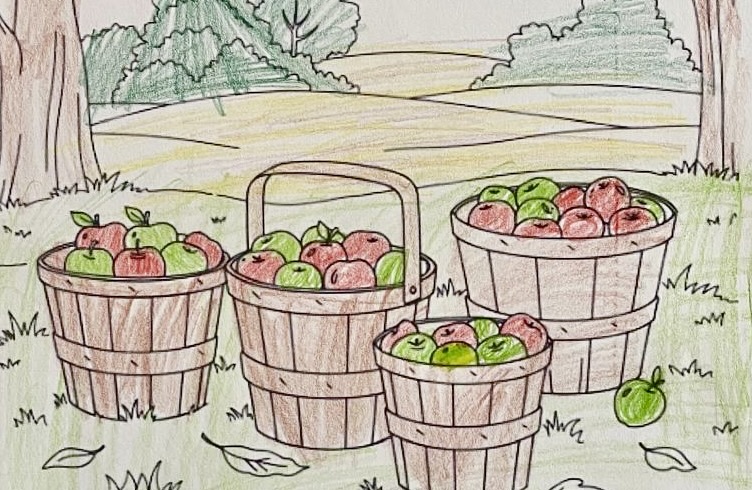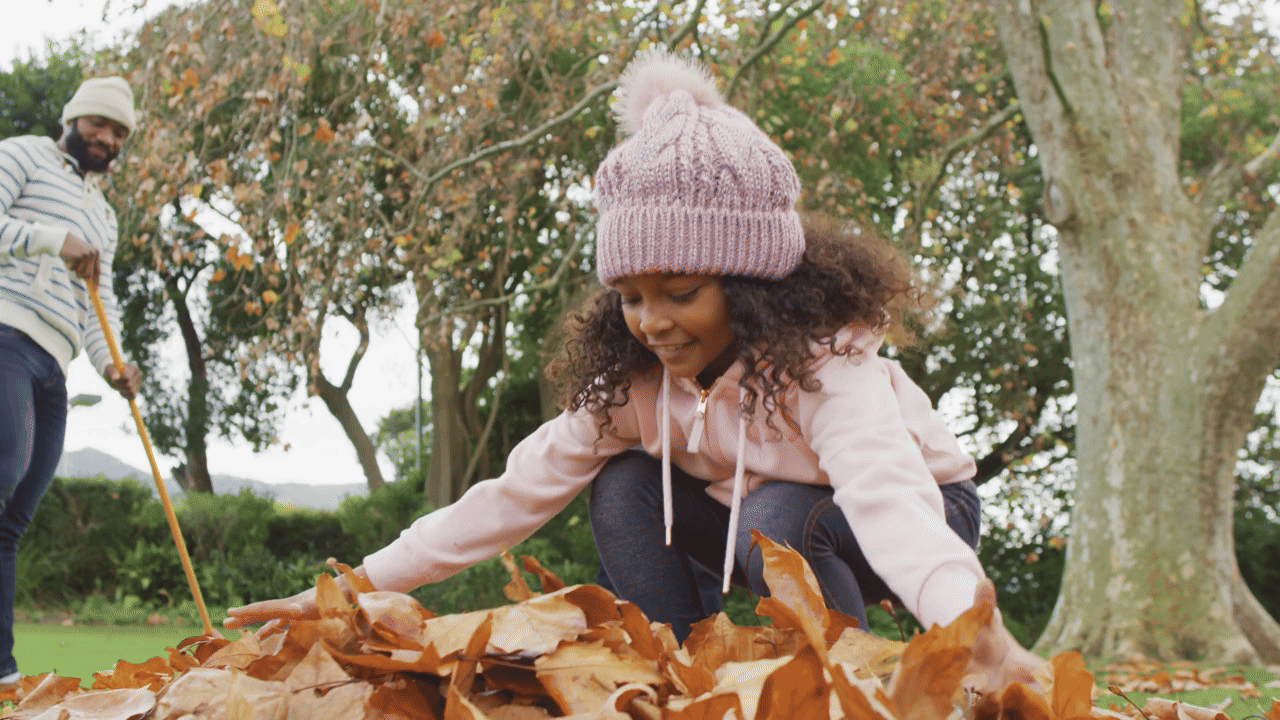
Should we call them Jellyfish or Sea jellies? The answer from scientists who study them is: absolutely do not call them Jellyfish!!! The are not fish at all! A more appropriate name would be Sea jellies, and please note that they do not move like fish either.
Now It’s Your Turn to Create!
After observing, sketching, and moving like sea jellies, it’s time to bring all that knowledge to life through art. In this hands-on craft, you’ll design and build your own jellyfish using everyday materials. Think about what you’ve learned—its shape, motion, and texture—and use those details to shape your creation. Get ready to cut, paint, and decorate your very own floating sea jelly! See the finished product above, then follow the written and video instructions below, created by our resident artist Nikita Lai Jing Tse, to help guide your creation!
Send us snapshots of your jellyfishes to info@thence.us to be featured on our socials or tag us on Linkedin or Instagram!






